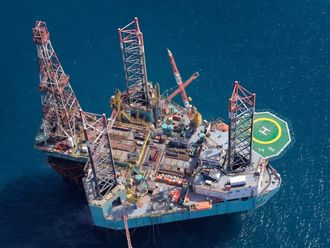London: The cost of fossil-fuel emissions rose to its highest level in more than a decade in Europe, surpassing €20 a ton ($23) and adding to the cost of electricity across the continent.
Carbon emission permits have more than quadrupled from less than €5 since the middle of 2017 after European Union governments agreed to cut away a surplus that had depressed prices since the financial crisis that started in 2008. Utilities and industrial polluters need the certificates to cover greenhouse gas emissions they produce.
The move is a reminder that governments across the region are determined to curtail the emissions blamed for global warming, starting with shifting the power industry away from using coal and toward cleaner fuels such as natural gas and renewables. The result has been some of the highest power prices in years in Britain, France and Germany.
“This is an important milestone for the EU emissions trading system and something that seemed like an impossibility just a year ago,” said Jahn Olsen, an analyst at Bloomberg New Energy Finance. “There was a feeling that the recently finalised reform was the ‘last chance saloon’ for the ETS. The recent price movement is a strong indicator that the EU finally got it right.”
The rally is a result of the forthcoming market stability reserve, a mechanism designed to automatically control the supply of allowances that starts from January 1. The MSR will remove 24 per cent of permits in circulation next year by reducing the amount that governments sell in auctions, Bloomberg NEF said.
The benchmark carbon futures contract surged as much as 4.6 per cent to €20.70 a ton in London trading, extending five days of gains.
The EU’s measures may push prices to as high as €50 a ton within the next three years, Carbon Tracker, a climate-change research group, said Tuesday. The forecast added to recent predictions of further market gains from Berenberg Bank to German utility RWE AG, Europe’s biggest emitter of greenhouse gases.
Higher emission costs can make it more cost-effective for power generators to use natural gas, which requires only about half the allowances needed to burn dirtier coal. That demand may push up gas prices, currently trading at the highest level for the time of the year in at least two decades.
Carbon’s surge — which has been accompanied by higher gas prices — contrasts with a slump across broader commodity markets. Oil, copper, lumber and sugar all have tumbled in the past three months as concerns about a trade war between the US and China weighed on the outlook for growth in emerging markets.
That gloom hasn’t yet appeared in Europe’s power and gas markets, partly because China’s demand for power generation fuels remains firm. The EU’s effort to curb supply may turn the current glut to a “serious” deficit, according to Berenberg analyst Lawson Steele, and keep prices rising in the coming months.
While the permit supply will tighten, some see the rapid pace of the latest gains indicates a reversal is due.
“The recent, almost panicked, buying points to high speculative engagement that should be followed by a significant correction,” analysts at Commerzbank AG said.
For now, prices for both gas and carbon are being driven by strong demand for those commodities. China is drawing more cargoes of liquefied natural gas, paying a premium to the rate European utilities would pay. The result has tightened supply in Europe, driving month-ahead gas prices to the highest since December.
Environmental restrictions encourage utilities to burn more gas than coal. Germany, France and the UK are all working on targets to phase out coal use completely in the coming decades. In the meantime, using those fuels requires utilities to buy carbon emissions permits, and analysts expect those prices may well head higher.
Carbon Tracker predicts prices of €35 to €40 a metric ton on average from 2019 to 2023. Market rates may hit €50 in the winters of 2021 and 2022.
Benchmark carbon futures have more than doubled this year, outperforming oil’s 9.7 per cent gain and the 3 per cent advance in the S&P GSCI commodities index.












